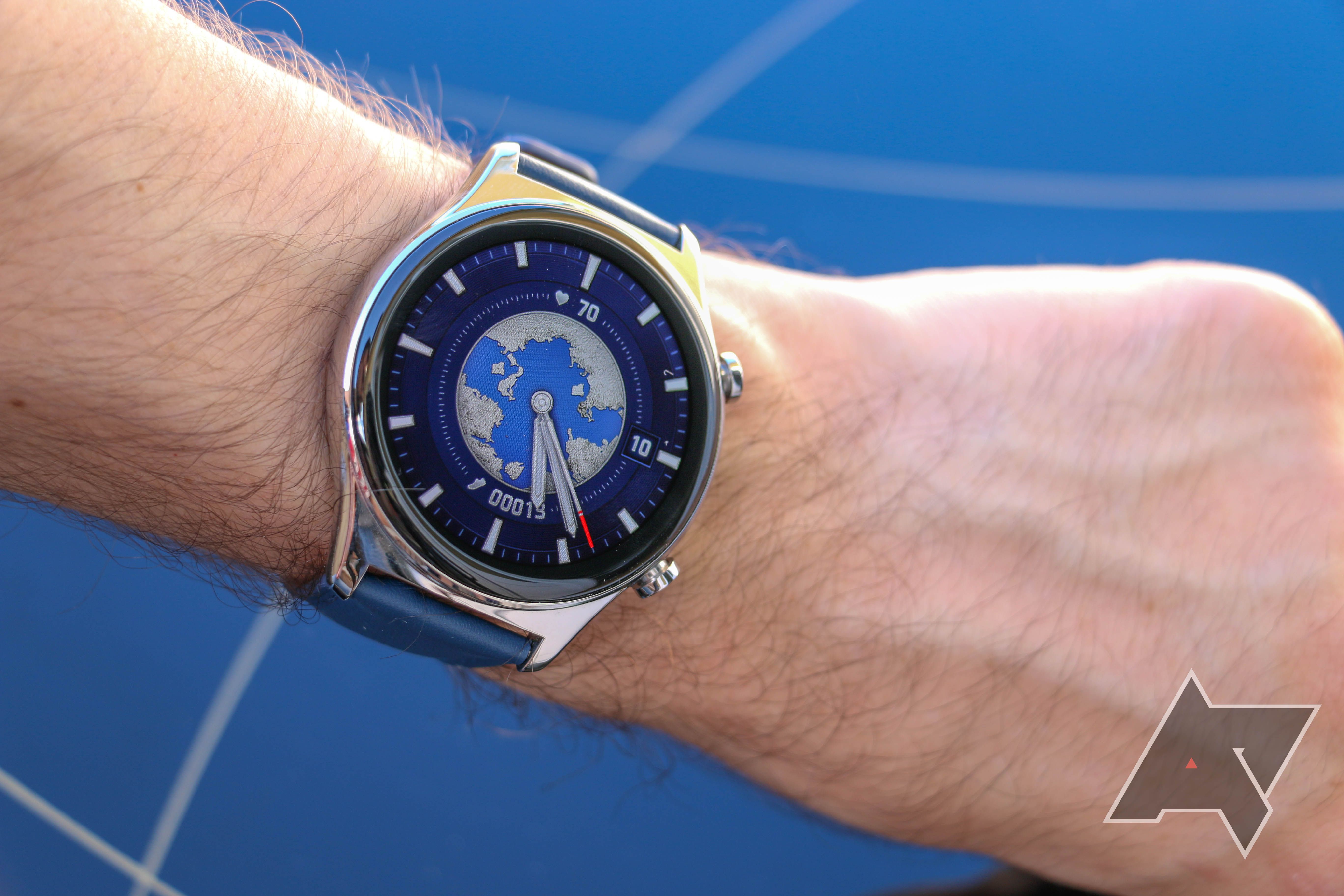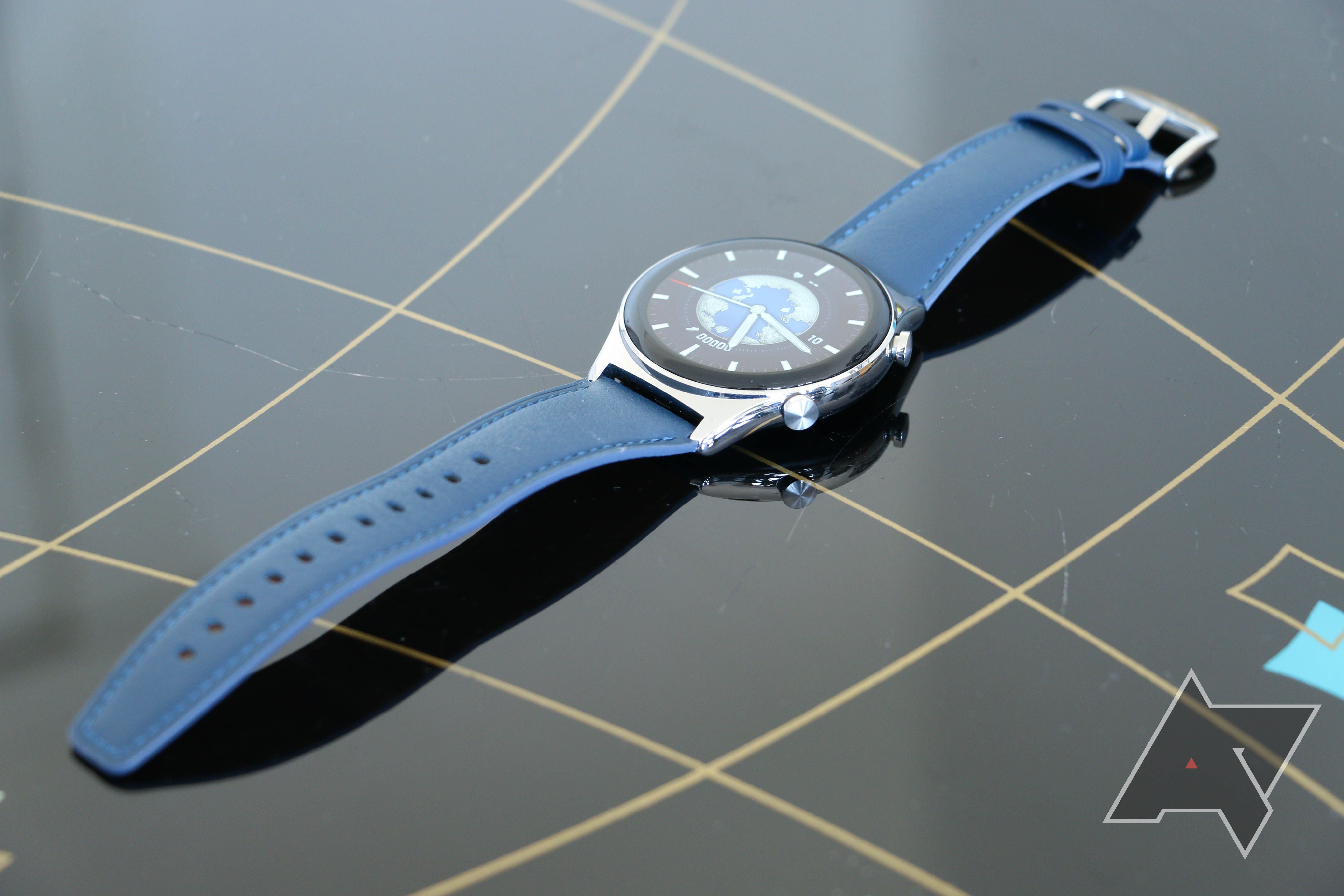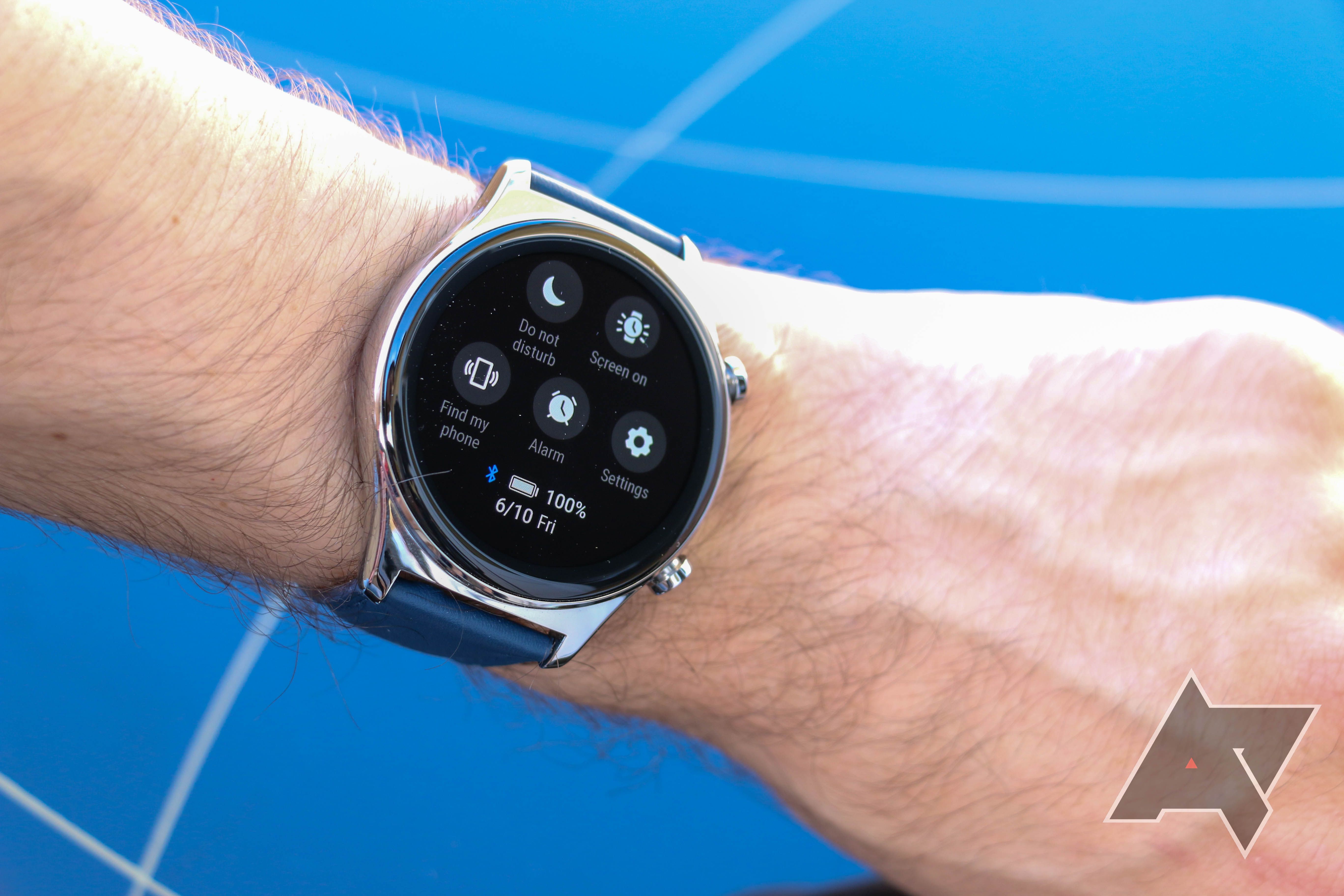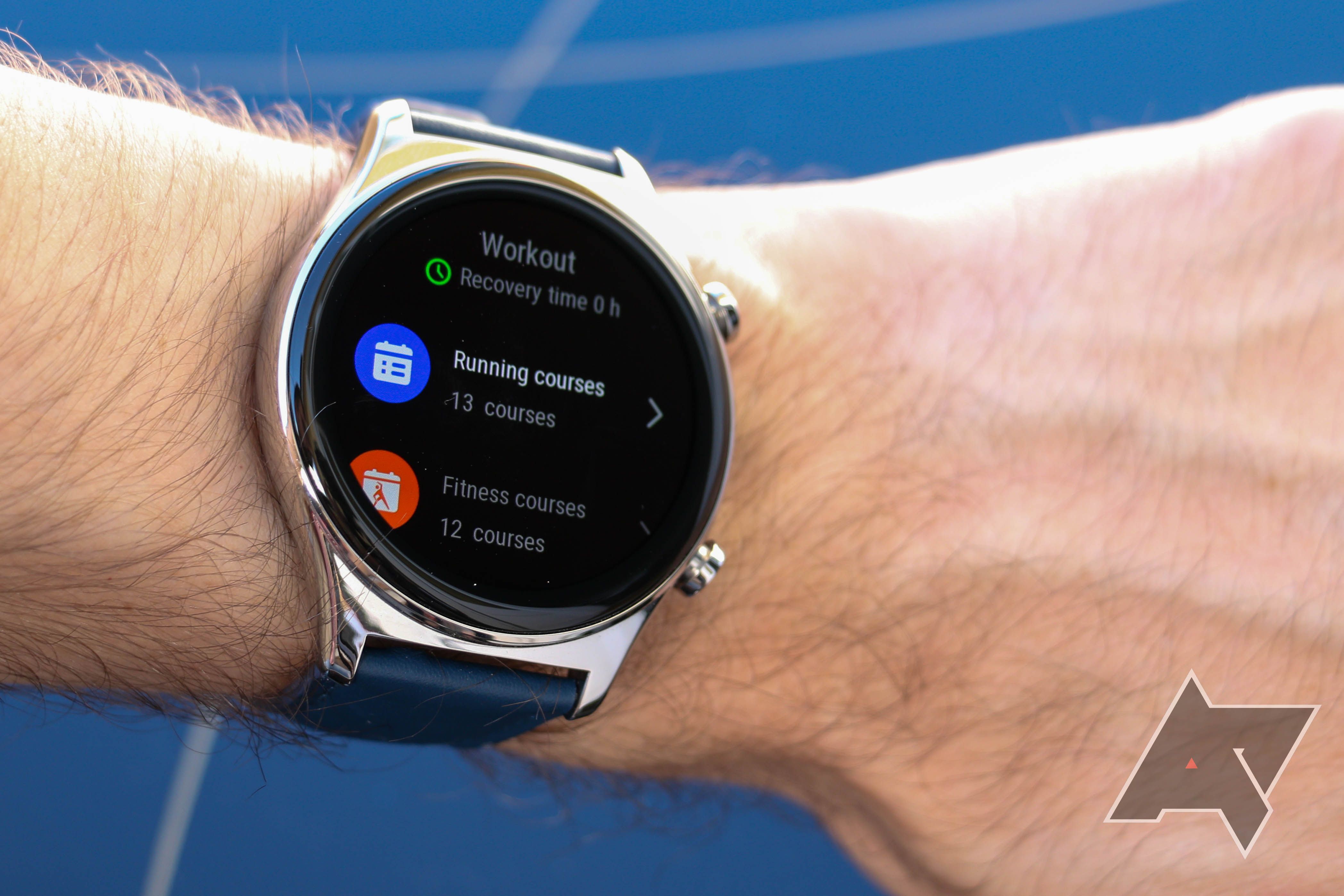Honor only recently split from its parent company, Huawei, back in 2020. The newly independent firm is working hard on building on its legacy while also moving forward on its own. However, losing Huawei's enormous research and development capabilities is a huge blow, and it’s one Honor needs to overcome before it can truly stand on its own. The company has already proven that it has the right building blocks set in place with devices like the Magic4 Pro, but it still has a lot of catching up to do. This becomes clearest when we look at some of Honor’s latest wearables, like the Watch GS 3.
On the surface, the Honor Watch GS 3 is a great piece of hardware. It’s beautifully crafted from stainless steel, curved glass, and a leather wristband (in two of its three variants, at least), plus it offers some great fitness smarts and multi-week battery life. It even comes with on-board GPS and storage for music, though it stops short at offering LTE connectivity and contactless payments, which would have made it possible to ditch your phone while working out. Those are still acceptable trade-offs, though.
What’s more interesting —and troubling — is the Watch GS 3’s software. While it isn’t explicitly stated, it’s all but certain that it’s based on LiteOS. That’s Huawei’s Linux-based Internet of Things-optimized operating system focused on being, well, lightweight: Its kernel comes in at just under 10KB. And like many other operating systems for smartwatches, it offers all the basic features you could need.
Despite all the trouble brewing for Huawei, the company’s development team isn’t standing still. Following the US sanctions that brought Huawei’s international expansion to a screeching halt, the business announced its own take on Android with much fanfare, dubbed HarmonyOS. It’s meant to be much more than a mere replacement for the Android with Google apps we know here in Western markets. The OS is designed to be a multi-kernel operating system, which allows it to run on all kinds of devices — including wearables. And indeed, Huawei’s latest smartwatches are no longer running LiteOS but rather HarmonyOS.
HarmonyOS offers quite some improvements over LiteOS
On the surface, HarmonyOS for watches and LiteOS look incredibly similar, but Huawei has added a few key enhancements with this upgrade. The recently released Huawei Watch GT3, reviewed by the folks over at 9to5Google, offers a few advantages over the Honor Watch GS 3. The key addition here is probably its support for third-party apps thanks to the Huawei App Gallery integration, much like you know from Wear OS and the Play Store. While there currently aren’t too many enticing apps in the Huawei store, it’s still a foundation for a bigger ecosystem and something that the Honor smartwatch currently misses altogether.
From what I can tell, Huawei’s HarmonyOS-based watch is also much better at notification management. The Honor watch I have here can display all content from notifications as you would see it in your phone’s notification shade, but you can’t interact with it at all. This is fine for those who just want to glance at incoming stuff at any moment, but for someone who might want to use their smartwatch as a smartphone replacement at times, that’s a huge letdown. HarmonyOS fixes this, offering a selection of ready-made reply templates and even an onboard keyboard that’s similar to Gboard on Wear OS.
That’s not all. Judging from the video reviews I’ve seen, the Huawei watch offers much smoother and fully animated transitions between the UI, all while feeling a lot less sluggish when moving through the interface than the Honor watch. When everything is configured correctly, you can even use the Huawei watch for mobile payments via NFC using Huawei Wallet, and the watch also includes a Google Maps alternative. Crucially, the Huawei watch also works with iOS, while Honor's wearable is only available for those using Android devices.
While these features might not be something you ever really need, it’s clear that Huawei managed to successfully iterate on its existing OS all while Honor is still stuck using an older version with fewer capabilities, and it even lost the option to connect to iPhones. In fact, the current Honor watch looks strikingly similar to older versions of Huawei hardware, with its dual-crown hardware design surely reminding me of the Huawei Watch GT2, released in 2019.
The box contents of the Honor Watch GS 3 are also very interesting. The included paper guide features a QR code that sends you to the Play Store to download, guess what, an outdated version of the Huawei Health app that isn’t compatible with the Honor watch. (As an aside, the app is outdated because it’s the Play Store version that Huawei doesn't support anymore — you need to get the most recent release from the Huawei App Gallery.) This makes it abundantly clear that Honor is still struggling to stand on its own.
The future is still looking bright for Honor
As dire as I may have painted the current situation, I don’t think that all hope is lost—what we're seeing is simply growing pains. Honor is actively working on updating both the watch firmware and its Honor Health app. This has already brought broader notification support for more apps to the table. It’s clear that the company is very committed to iterating on what it currently has, and we can only hope that future versions of its LiteOS and its watches will fil lin the experience gaps.
It’s reassuring that nothing is inherently wrong with the Honor Watch GS 3, either. When you look at it in isolation, it’s a great wearable that makes some of the usual trade-offs that all smartwatches inevitably do. The GS 3 isn't any worse on balance than devices from competitors like Xiaomi with the Watch S1 or Fitbit. Sure, improved notifications, better animations, and payment support would be neat and could help the GS 3 stand out from the crowd. Still, in the broader wearable market, these aren’t the only features that you need to nail, and the Watch GS 3 has all the basics down and it looks great.
Honor is still very much getting started. It could previously rely on hardware and software expertise from its parent company, but as a brand-new entity of its own, it still needs some time to build its software team and nail all these basics. We'll have to wait a bit longer until the brand becomes as competitive as the rest of the industry.




